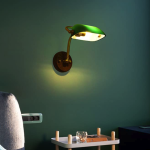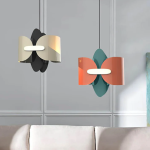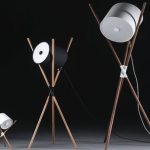Introduction
Lighting plays a crucial role in setting the mood and ambiance of any space. Whether it’s for a home, office or commercial establishment, the right lighting can enhance the overall aesthetic and functionality of the space. Spotlights and pendants are two popular lighting options that offer a combination of style and functionality. In this article, we will explore the versatility of spotlights and pendants and how they can be used to create the perfect lighting for any occasion.
What are Spotlights?
Spotlights are directional lights that are designed to focus light on a specific area or object. They typically have a narrow beam angle and are used to highlight artwork, architectural features, or decorative items such as sculptures, vases or plants. Spotlights can be used individually or in groups to create a dramatic effect. They are available in a variety of styles and finishes ranging from modern to traditional. Spotlights can be mounted on the ceiling or on the wall, and they are often used in retail stores to showcase products.
Advantages of Spotlights:
- Highlight specific areas or objects
- Directional light
- Dramatic effect
- Available in various styles and finishes
What are Pendants?
Pendants are hanging lights that are suspended from the ceiling by a cord, wire or chain. They provide ambient or task lighting and can be used to create a focal point in a room. Pendants are available in a wide range of sizes, styles, and materials including glass, metal, and fabric. They can be used individually or in groups to create a dramatic effect. Pendants are often used in dining areas, kitchens, and bedrooms.
Advantages of Pendants:
- Provide ambient or task lighting
- Create a focal point
- Available in a wide range of sizes, styles and materials
- Can be used individually or in groups
Applications and Combinations
When used in combination, spotlights and pendants can create a dynamic and versatile lighting scheme that can adapt to different settings and occasions. Spotlights can be used to draw attention to specific areas, while pendants can provide general illumination. For example, in a living room, spotlights can be used to highlight artwork or architectural features, while pendants can provide ambient lighting for the rest of the room. In a kitchen, spotlights can be used to highlight task areas such as the stove or sink, while pendants can be used to create a focal point above the kitchen island or dining table.
Conclusion
Spotlights and pendants are versatile lighting options that can be used to create the perfect lighting for any occasion. Whether you want to highlight specific areas, create a focal point or provide ambient or task lighting, spotlights and pendants can be used individually or in combination to achieve the desired effect. With their wide range of styles and finishes, spotlights and pendants can complement any décor and elevate the overall aesthetic of any space. So next time you’re planning a lighting scheme, consider the versatility of spotlights and pendants and see how these lighting options can transform your space.





